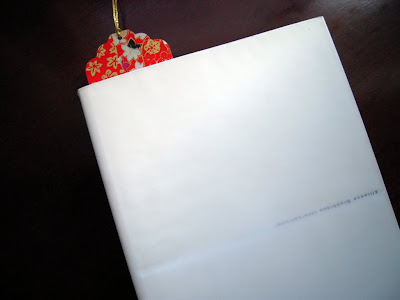There’s a lot to Japanese New Year (お正月), so I hope I can explain it clearly.
Until about two-hundred years ago, Japan followed the Chinese year with New Year in early Spring, but now follows the western calendar with New Year's Day on January 1st. But the Chinese zodiac is still used with each year being represented by an animal. There are twelve animals. 2010 is the Year Of Tiger .
In December, people start cleaning their houses from top to bottom and they may decorate their houses with traditional Japanese New Year's decorations such as 鏡餅 (kagami-mochi, which is made from two rice cakes (mochi) of different sizes, the smaller placed over the larger one, and a a Japanese type of orange placed on top.), 門松 (kado-matsu), お飾り (okazari), and ダルマ (daruma).
Also in December, people write and send out New Year's Postcards (年賀状), which are kinda similar to Christmas cards in western countries. New Year's Postcards are written by hand on special New Year's postcards that can be purchased from the post office or some other stores. Many people make their own New Year's Postcards---that's one of the reason they invented Print Gocco (プリントゴッコ). If New Year's Postcards are put in the mailbox during dates specified by the post office, they are guaranteed to be delivered on January 1st exactly.
 {New Year's Postcards}
{New Year's Postcards}Besides, each New Year's Postcards has it’s own serial number printed on the back. In January, the post office announces a series randomly drawn numbers for a New Years Postal Lottery, whoever has a postcard with a winning number can receive a prize which is often something like a paid vacation in Hawaii, a television, a stationary set or stamps. I have never won anything yet. Not even stamps.
On New Year's Eve, people might watch one of the popular music shows on television or they may pay a visit to a temple for the temple priest’s ringing of the temple bell 108 times.
On New Year's Day, firsts are important. The first meal of the New Year should be New Year’s noodles (年越そば), many people watch the year’s first sunrise, the first dream of the year is important, as well as the first calligraphy, first tea ceremony, etc.
Just like Christmas in the west, families get together on New Year's Day for having a traditional Japanese New Year's dinner called お節料理 (O-sechi-ryouri). Children are given gifts of money お年玉 (O-toshi-dama) in special envelopes. These envelopes are usually decorated with popular cartoon characters, so often when the kids are little, the envelopes are more appealing to them than the money inside!Finally, on New Year's Day and for a few days following, stores often have big sales, so shopping is popular. Many stores also have Happy Bag or Lucky Bag (福袋). These are bags of various items from the store put inside a sealed bag and sold at a discount price. For example, store may put in $500 worth of products in and sale it for $100! The only catch is---you can’t look inside the bag until you pay for it! The stores tell if whether the items are for men, women or children and what the sizes are if there are clothes inside.
お正月 (New Year) is also one of the two times a year that the public is allowed inside the Imperial Palace grounds to hear the Japanese Emperor’s New Year’s greeting.
So, New Year (お正月) is a very busy time…but it’s also very fun. Hope next year I can go home and have a realy Japanese New Year (お正月) again! I really miss it!






























































